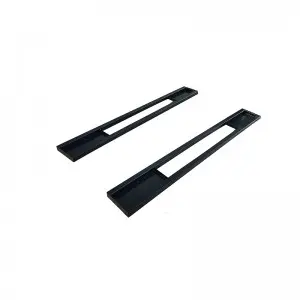Cylinders have been an integral part of human civilization for hundreds of years. Defined as a solid figure with straight parallel sides and a circular or oval cross-section, cylinders have found widespread use in various fields. From their humble beginnings in ancient times to their significance in modern technology, the cylinder has proven to be an indispensable shape across many cultures and industries.
The invention of the cylinder dates back thousands of years, with evidence suggesting their existence in ancient Mesopotamia and Egypt. These early civilizations used clay and stone to create cylindrical shapes for storing water and other liquids. The cylinder’s ability to maximize volume while occupying minimal space made it an ideal choice for storage vessels.

The Fascinating History and Versatile Uses of the Cylinder: From Ancient Times to Modern Technology
In ancient Greece, the cylinder made its mark on the architectural landscape. One of the most famous examples is the Parthenon in Athens, which features a cylindrical shape known as a peristyle. This innovative design not only enhanced the aesthetics of the temple but also provided structural support.
As time progressed, the cylinder became a symbol of power and status. In ancient Rome, emperors commissioned large cylindrical mausoleums as their final resting places. The most renowned of these is the Mausoleum of Augustus, which still stands today as a testament to the grandeur and significance associated with the shape.
The advent of the industrial revolution brought about a new era of cylinder usage. In the 19th century, engineers harnessed the power of steam to drive machinery. The invention of the steam engine revolutionized transportation, and cylinders played a crucial role in its operation. Steam engines relied on a reciprocating motion created by pistons moving within cylinders to convert heat energy into mechanical force.
The cylinder even found its place in the world of music. In the late 18th century, Wolfgang Amadeus Mozart introduced the “musical cylinder,” a device that used a rotating cylinder with pins to play musical tunes. This precursor to modern music boxes and player pianos delighted audiences with its charming melodies.

The Fascinating History and Versatile Uses of the Cylinder: From Ancient Times to Modern Technology

The Fascinating History and Versatile Uses of the Cylinder: From Ancient Times to Modern Technology
Fast forward to the modern era, and cylinders continue to play a vital role in technology and innovation. In the automotive industry, cylinders power internal combustion engines, converting fuel into mechanical energy. Advances in engineering have led to the development of multi-cylinder engines, improving performance and fuel efficiency.
Cylinders also find extensive use in hydraulic and pneumatic systems. Hydraulic cylinders convert fluid power into linear motion, driving machinery in industries such as construction and manufacturing. Pneumatic cylinders, on the other hand, use compressed air to create force and motion, enabling automation in various applications.
The cylindrical shape has also infiltrated the world of electronics. Batteries, which power countless devices, are often cylindrical in form. Lithium-ion batteries, commonly found in smartphones and laptops, utilize cylindrical cells to house the chemical reactions that produce electrical energy.
Furthermore, cylindrical structures are prevalent in architecture and design. From modern skyscrapers to bridges and tunnels, cylinders provide stability and elegance to these structures. Architects often incorporate cylindrical elements to create visual interest and optimize space utilization.
In conclusion, the cylinder has a rich history and versatile applications spanning ancient times to modern technology. From its humble beginnings as a storage vessel to its pivotal role in powering engines, music devices, and hydraulic systems, this simple shape continues to shape the world around us. Whether in architecture, engineering, or everyday objects, the cylinder’s efficiency and functionality make it an indispensable component of human innovation.Inground lift
